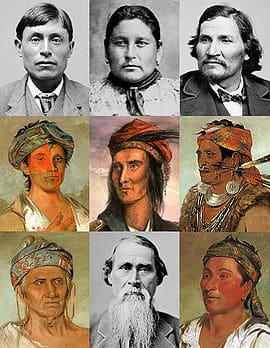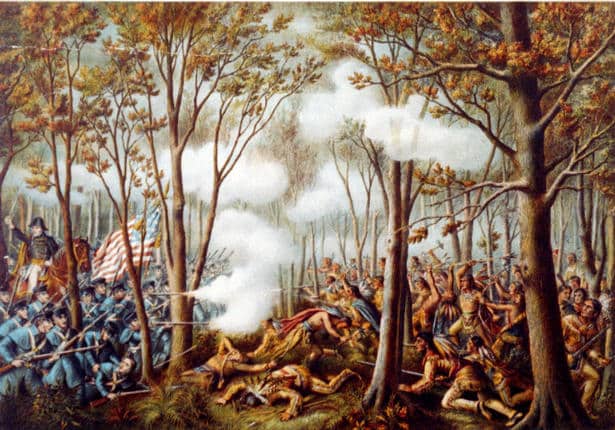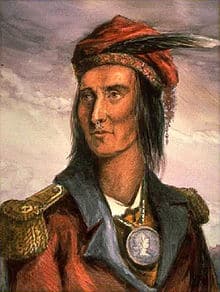The Shawnee
– Originated from Ohio Valley
– Name means Southerners
– Villages in South Carolina, Tennessee, Penny, Georgia, Alabama, Ohio
– Roving people, practiced agriculture in villages
– Spoke Algonquin dialect
– Relied on the woods in their culture and habits
The Shawnee – Overview and Contributions to the War Effort
– A First Nations tribe which felt great resentment towards the United States’ idea of Manifest Destiny – Shawnee
– Tecumseh was an intelligent and widely respected war chief of the Shawnee Indians in the early 1800s. He attempted to assemble a confederation of tribes to resist white settlement into the center of the North American continent, in the Ohio and Mississippi valleys.
– Tecumseh became a prominent First Nations leader and led his campaigns at Detroit and Fort Meigs
– Tecumseh experienced many victories along the British side and many more warriors joined him in Canada
– While many Shawnee enlisted along Tecumseh’s side, many just mentally opposed the United States and maintained a neutral stance during the war
Major Generals and Chiefs
– American: William Henry Harrison, the American Military Officer who became the 9th President of the United States and was commended for his military achievements and developments
– British: Sir Isaac Brock, a British Army Officer nominated for the job of defending Canada; holds great heritage for his military achievements and repulsion of the American army.
– Native: Tecumseh (leader of the Shawnee and other branches of First Nations tribes) and Joseph Brant (Mohawk Leader)
Highlight Battles of the War
Battle of Tippecanoe
- 1811 – William Henry Harrison invaded Tecumseh’s main village while Tecumseh was absent
- The village was a threat to American expansion
- The ensuing battle was a draw in terms of casualties, but Harrison successfully destroyed the village
- This doomed the Indian force from being much help to the British during the war
Surrender of Detroit
- August 16th, 1812 – Tecumseh led 600 Native warriors (mainly Shawnee) to capture Fort Detroit
- Though outnumbered, Brock and Tecumseh worked together, spreading out their forces to create the illusion of greater numbers to intimidate the Americans – This military process was significant to American history and was to be used in the American Civil War
- The Americans were terrified and quickly surrendered Detroit
Battle of the Thames (Moravian Town)
- October 5th, 1813 – Under leadership of Tecumseh, 500 First Nations (mainly Shawnee) warriors resisted Americans
- In the end, defeated by Americans
- While British commander fled, Tecumseh remained and was ultimately killed
- His death was tremendous blow to unity of Western Nations and ended British alliance with the American First Nations’ tribes
Results
Tecumseh’s Legacy
– The Treaty of Paris had been signed signifying peace with the Canadians and the Americans
– Peace and neutrality would come where Canadians would later decide to leave Detroit only through the condition that they would keep their original territory
– The United States made a brisk decision and did not want to engage in further combat with Canada, prioritizing European Affairs
If Tecumseh’s idea of organizing the various Indian tribes to resist white settlement had succeeded, it would have seriously changed the course of American history. His political skills and charismatic leadership made him a revered figure. Countless tributes to Tecumseh have appeared over the past two centuries, including the naming of towns and US Navy ships for him. Tecumseh has become an iconic hero in American, Aboriginal and Canadian history.



